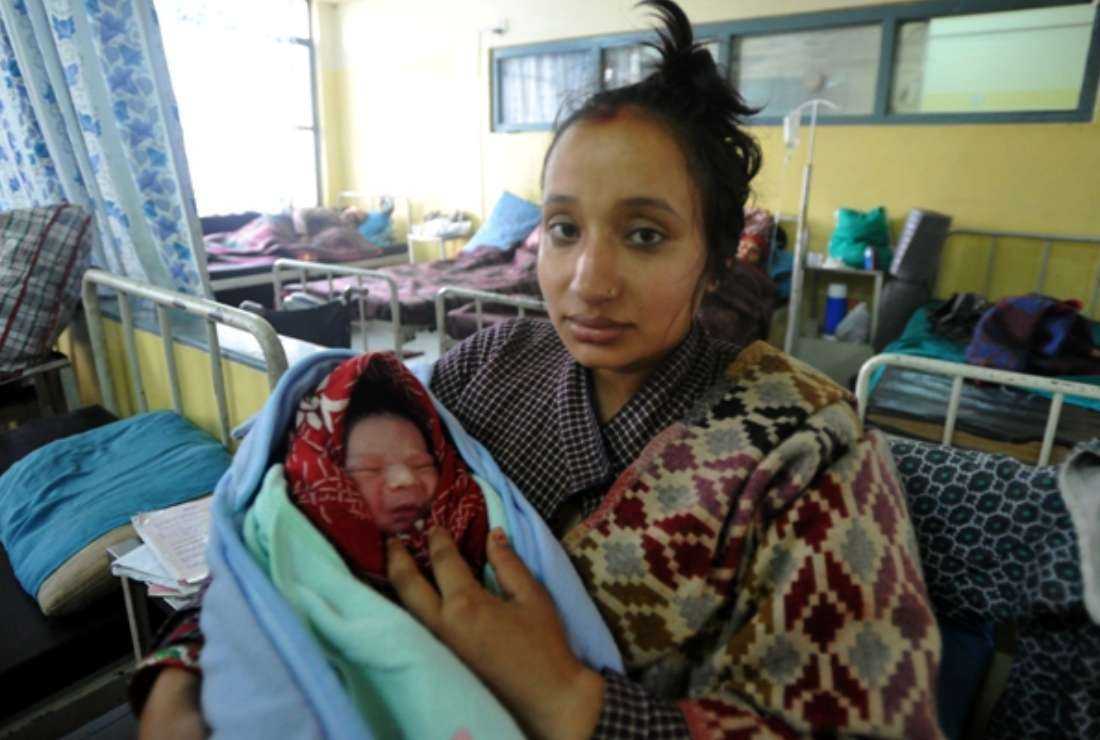
Health ministry’s survey report indicates possible gaps in coverage of maternity care provided in the country

A Nepalese mother holds her newly born baby boy at Nepal Maternity hospital in Kathmandu on Oct. 31, 2011. (Photo/AFP)
More than 20 percent of women in Nepal gave birth at their homes rather than hospitals despite efforts by government agencies to improve maternity treatment coverage, says an interdepartmental survey.
According to the Nepal Demographic and Health Survey 2022 conducted by the Ministry of Health and Population, only 79.3 percent of its 700,000 pregnant women gave birth in health facilities during the year, The Kathmandu Post reported on Feb. 22.
The survey conducted between Jan. 5 and Jun. 22 last year received technical and financial support from the United States Agency for International Development and research support from Nepal’s first non-profit organization, New ERA.
The survey showed that 144,900 or 20.7 percent of women gave birth at their homes.
“We do not know who those women are and where they are,” said Nisha Joshi, a senior public health officer at the Family Welfare Division under the Department of Health Services.
Joshi stated that the survey report indicates possible gaps in coverage of maternity care provided in the country.
“Despite an impressive improvement in maternal health care seeking trends in the country, the report shows that thousands of women are still deprived of maternity care services,” Joshi said.
According to the survey, only 70.2 percent of women in Nepal received a postnatal check during the first two days after birth. The figure was only 57 percent in 2016.
The survey also revealed that 94.3 percent of women received antenatal care in 2022 in contrast to only 84 percent in 2016.
The government in Nepal aims to reduce the maternal mortality rate to be at par with the UN’s Sustainable Development Goal of 75 maternal deaths for every 100,000 births by 2030 through various maternity care schemes.
Reportedly, Nepal reduced its maternal mortality rate from 539 per 100,000 births in 1996 to 258 per 100,000 births in 2015.
“We are in line to meet the SDG target on maternal health, but the problem is a large number of women are still deprived of the basic services offered by the government,” Joshi lamented.
Maternity care visits, including antenatal and postnatal care visits, institutional delivery, and provisions of iron supplementation and folic acid are provided free of cost to pregnant women in the country through its state-run health facilities.
According to the survey, 96 percent of women took iron-containing supplements during their most recent pregnancy.
Reportedly, some of the community hospitals and medical colleges also offer the services free of cost for which the Ministry of Health and Population reimburses the expenses to those health facilities.
The Health Ministry has even doubled antenatal care visits from four to eight by providing various allowances to women. Experts say antenatal visits will help health workers rule out complications earlier in the pregnancy.
Dr. Ganesh Dangal, president of the Nepal Society of Obstetricians and Gynecologists pointed out that despite having government schemes to protect pregnant women from losing their lives, the lack of access to facilities during emergencies and trained personnel is a huge hurdle.
“It would take hours to reach health facilities in remote settings. Even if women in labor are taken to health facilities, there is no guarantee that health facilities have trained human resources,” Dr. Dangal said.
Reportedly, the Health Ministry had hired trained nurses to provide postnatal care at home to reduce the possibility of maternal deaths after childbirth.
According to the report, there has been an increase in the percentage of live births that are assisted by skilled providers from 10 percent in 1996 to 80 percent in 2022. However, those who are not covered or who miss the services are a huge concern for the government.
According to Nepal’s Health Ministry, 24 percent of maternal deaths occur during or after childbirth and 19 percent during the postpartum period – which begins at childbirth and ends within 6 weeks.
Reportedly, excessive bleeding after childbirth, also known as postpartum hemorrhage, is the most common factor leading to the death of new mothers in the country.
Several government programs aimed at increasing maternal care such as the President’s Women Uplift Program, free institutional delivery service, and allowances given to pregnant women for antenatal, postnatal, and institutional delivery have reportedly yielded results to reduce maternal deaths.
Help us keep UCA News independent
The Church in Asia needs objective and independent journalism to speak the truth about the Church and the state.
With a network of professionally qualified journalists and editors across Asia, UCA News is just about meeting that need. But professionalism does not come cheap. We depend on you, our readers, to help maintain our independence and seek that truth.
A small donation of US$2 a month would make a big difference in our quest to achieve our goal.

Share your comments